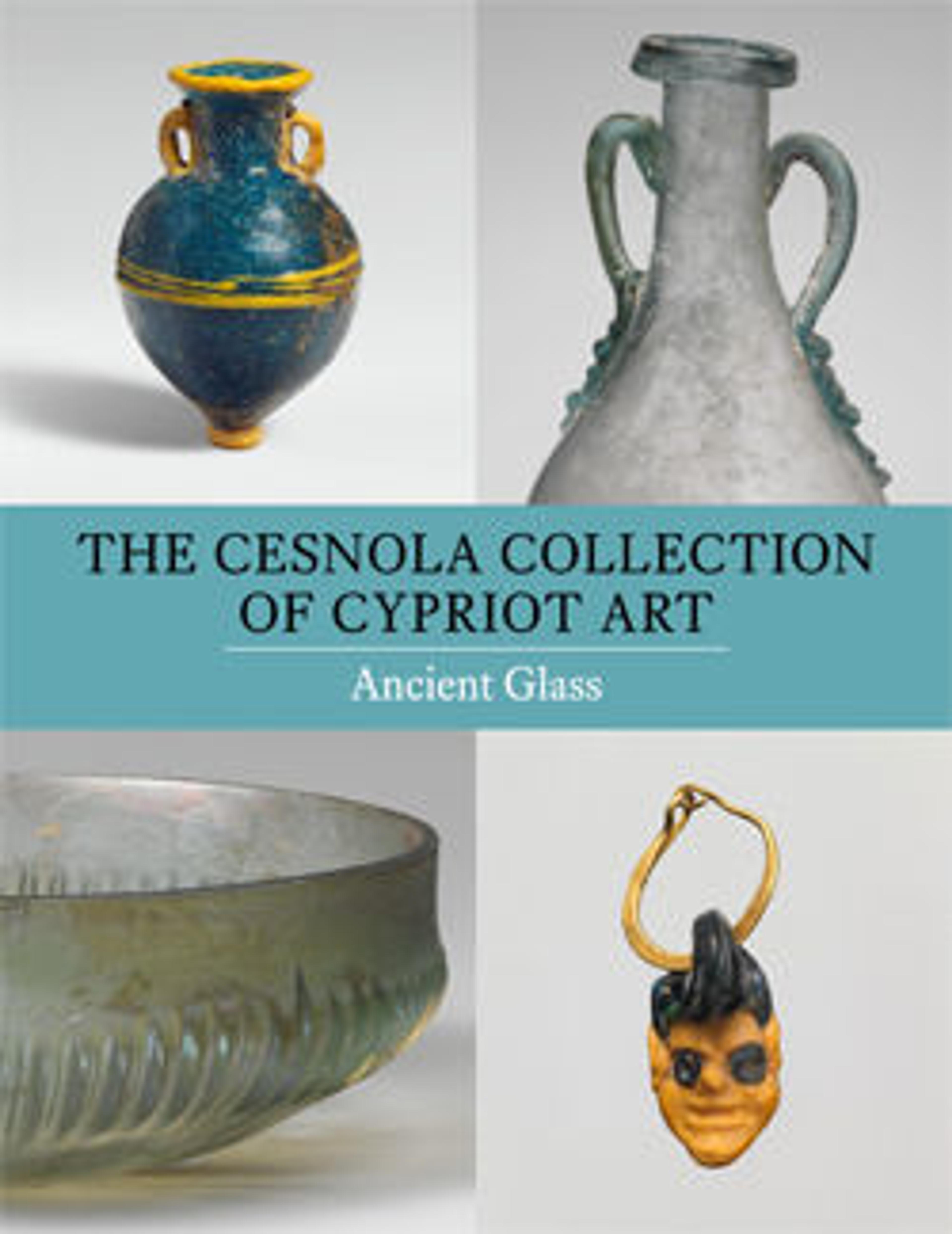Glass alabastron (perfumebottle)
Coloress with pale greenish tinge.
Rim with everted, beveled, horizontal lip; short, funnel-shaped neck; rounded shoulder; elongated ovoid body; round bottom; on upper body, two solid projecting, semicircular handles, tapering outward, carved from body of vessel.
Broken and repaired with several areas of fill in body; pinprick bubbles; dulling, pitting, and small patches of thick, white weathering.
The alabastron was cast and then ground to its present shape. The Phoenicians were probably important intermediaries in the introduction of glass objects and technology from the Near East and Egypt into Cyprus.
Rim with everted, beveled, horizontal lip; short, funnel-shaped neck; rounded shoulder; elongated ovoid body; round bottom; on upper body, two solid projecting, semicircular handles, tapering outward, carved from body of vessel.
Broken and repaired with several areas of fill in body; pinprick bubbles; dulling, pitting, and small patches of thick, white weathering.
The alabastron was cast and then ground to its present shape. The Phoenicians were probably important intermediaries in the introduction of glass objects and technology from the Near East and Egypt into Cyprus.
Artwork Details
- Title: Glass alabastron (perfumebottle)
- Period: Archaic
- Date: ca. 625–600 BCE
- Culture: Probably Phoenician
- Medium: Glass; cast and cut
- Dimensions: 7 in. (17.8 cm)
Other: 2 5/8 in. (6.7 cm)
Diam. of rim: 1 5/16 in. (3.3 cm) - Classification: Glass
- Credit Line: The Cesnola Collection, Purchased by subscription, 1874–76
- Object Number: 74.51.312
- Curatorial Department: Greek and Roman Art
More Artwork
Research Resources
The Met provides unparalleled resources for research and welcomes an international community of students and scholars. The Met's Open Access API is where creators and researchers can connect to the The Met collection. Open Access data and public domain images are available for unrestricted commercial and noncommercial use without permission or fee.
To request images under copyright and other restrictions, please use this Image Request form.
Feedback
We continue to research and examine historical and cultural context for objects in The Met collection. If you have comments or questions about this object record, please complete and submit this form. The Museum looks forward to receiving your comments.
